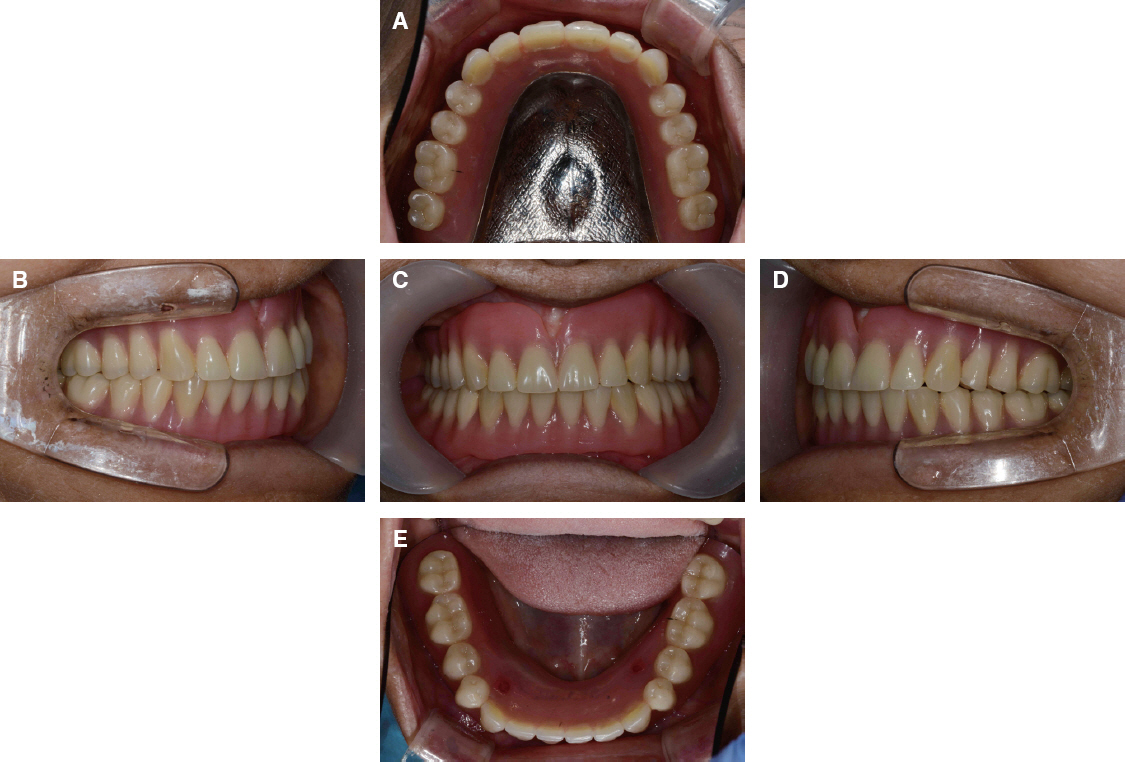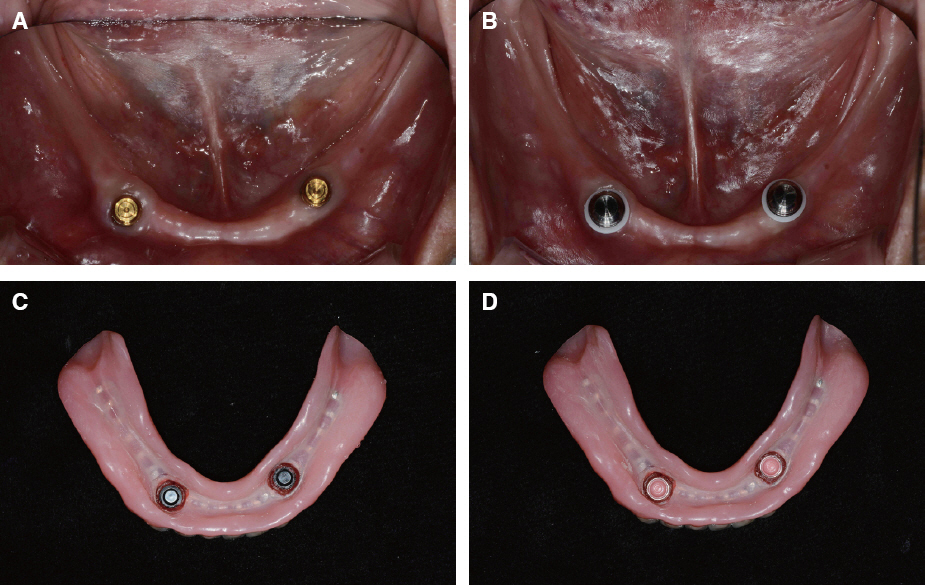J Dent Rehabil Appl Sci.
2017 Mar;33(1):55-62. 10.14368/jdras.2017.33.1.55.
The implant retained overdenture by Locator attachments on the edentulous mandible using Parallel guide KIT®: a case report
- Affiliations
-
- 1Department of Prosthodontics, School of Dentistry, Chonnam National University, Gwangju, Republic of Korea. psw320@jnu.ac.kr
- KMID: 2377060
- DOI: http://doi.org/10.14368/jdras.2017.33.1.55
Abstract
- Overdenture using dental implants could improve the problems of conventional complete denture function which are pain during mastication, insufficient retention and stability. Locator attachment used widely for implant-retained overdenture has advantages that it needs the smallest vertical space and also its nylon male cap allows personalized retention for each case. However its retention force decreases rapidly with function rather than the bar and ball attachment. So, implant fixture should be positioned as parallel as possible.
Keyword
MeSH Terms
Figure
Reference
-
References
1. Feine JS, Carlsson GE, Awad MA, Chehade A, Duncan WJ, Gizani S, Head T, Lund JP, MacEntee M, Mericske-Stern R, Mojon P, Morais J, Naert I, Payne AG, Penrod J, Stoker GT, Tawse-Smith A, Taylor TD, Thomason JM, Thomson WM, Wismeijer D. The McGill consensus statement on overdentures. Mandibular two-implant overdentures as first choice standart of care for edentulous patient. Montreal, Quebec, May 24-25 2002. Int J Oral Maxillofac Implants. 2002; 17:601–2. PMID: 12182304.2. Misch CE. Dental implant prosthetics. 2nd ed. Beijing: ELSEVIER;2015. p. 573–97. DOI: 10.1016/B978-0-323-07845-0.00022-1.3. Sadowsky SJ. Treatment considerations for maxillary implant overdentures: a systemic review. J Prosthet Dent. 2007; 97:340–8. DOI: 10.1016/S0022-3913(07)60022-5.4. Trakas T, Michalakis K, Kang K, Hirayama H. Attachment systems for implant retained overdentures: a literature review. Implant Dent. 2006; 15:24–34. DOI: 10.1097/01.id.0000202419.21665.36. PMID: 16569958.5. Schneider AL, Kurtzman GM. Bar overdentures utilizing the Locator attachment. Gen Dent. 2001; 49:210–4. PMID: 12004703.6. Abi Nader S, de Souza RF, Fortin D, De Koninck L, Fromentin O, Albuquerque RF Junior. Effect of simulated masticatory loading on the retention of stud attachments for implant overdentures. J Oral Rehabil. 2011; 38:157–64. DOI: 10.1111/j.1365-2842.2010.02145.x. PMID: 20819139.7. Uludag B, Polat S. Retention characteristics of different attachment systems of mandibular overdentures retained by two or three implants. Int J Oral Maxillofac Implants. 2012; 27:1509–13. PMID: 23189303.8. Kim SW. Implant overdenture. Seoul: Myoung Mun Publishing Company;2007.9. Jabbour Z, Fromentin O, Lassauzay C, Abi Nader S, Correa JA, Feine J, de Albuquerque RF Junior. Effect of implant angulation on attachment retention in mandibular two-implant overdentures: a clinical study. Clin Implant Dent Relat Res. 2014; 16:565–71. DOI: 10.1111/cid.12030. PMID: 23305358.
- Full Text Links
- Actions
-
Cited
- CITED
-
- Close
- Share
- Similar articles
-
- The Implant Retained Overdenture by Locator Attachments on the Edentulous Mandible: A Case Report
- Clinical evaluation of implant retained overdentures using two implant and Locator attachments in the fully edentulous mandibles
- Implant-supported milled bar overdenture with two implant surgical guides
- Implant-retained overdentures with pre-fabricated bar attachment system in edentulous patients
- Implant overdenture using a locator bar system by drill and tapping technique in a mandible edentulous patient: a case report









